Lifestyle: How to Future-proof Your Home For Retirement
Plan ahead with these room-by-room tips to save time, money and inconvenience when making your home safe and user-friendly post-retirement
Our homes reflect our lifestyles. We decorate them to represent who we are and arrange them to service our needs as we pass through various stages in life. For example, the way a single homeowner lives is vastly different to how a small family go about their day-to-day lives at home. Older people have particular challenges. They often live in houses designed for their much-younger selves, which means the design features they have taken for granted over a lifetime, such as stairs and showers, start to become obstacles as they age.
It makes sense, then, to adapt our homes to mature-aged living by future-proofing it at a time when we are still spritely enough to do it. According to Independent Living Centres Australia (ILCA), a few modifications now make all the difference for later on. And as governments are keen for us to live as long as possible at home, there are a wide range of services available that allow older people to receive extra support and advice. Find below a list of the essential changes you might make in each room of the house. With a bit of luck, your efforts now might also delay the kids shipping you off early to the nursing home.
It makes sense, then, to adapt our homes to mature-aged living by future-proofing it at a time when we are still spritely enough to do it. According to Independent Living Centres Australia (ILCA), a few modifications now make all the difference for later on. And as governments are keen for us to live as long as possible at home, there are a wide range of services available that allow older people to receive extra support and advice. Find below a list of the essential changes you might make in each room of the house. With a bit of luck, your efforts now might also delay the kids shipping you off early to the nursing home.
In the hallway
If you don’t already have good access, consider widening your hallway to accommodate a big front door. It won’t just make it easier to move in furniture, it will also create the space necessary for wheelchairs and making the use of a walking stick much easier, if ever you need either.
Future-proof plan Make sure there isn’t a lip at the entrance, as older people can find it difficult to lift their feet over a traditional threshold. Consider placing a seat or fixing a shelf near the front door; both could be useful places to put down shopping while you find your front door keys. According to ILCA, an automatic sensor light at the entrance will help aid entry, too.
Another idea is to install a high- or low-tech emergency call system. It could be as simple as activating a personal alarm, which is often carried on the user, a call or buzzer system that can be attached to the telephone line or an intercom connected to a neighbour’s home. Another easy-to-use suggestion for opening the door is to swap a round doorknob, which becomes harder to grip due to its spherical shape, for a lever.
Like this lime front door? Check out more green doors
If you don’t already have good access, consider widening your hallway to accommodate a big front door. It won’t just make it easier to move in furniture, it will also create the space necessary for wheelchairs and making the use of a walking stick much easier, if ever you need either.
Future-proof plan Make sure there isn’t a lip at the entrance, as older people can find it difficult to lift their feet over a traditional threshold. Consider placing a seat or fixing a shelf near the front door; both could be useful places to put down shopping while you find your front door keys. According to ILCA, an automatic sensor light at the entrance will help aid entry, too.
Another idea is to install a high- or low-tech emergency call system. It could be as simple as activating a personal alarm, which is often carried on the user, a call or buzzer system that can be attached to the telephone line or an intercom connected to a neighbour’s home. Another easy-to-use suggestion for opening the door is to swap a round doorknob, which becomes harder to grip due to its spherical shape, for a lever.
Like this lime front door? Check out more green doors
In the living room
As we age, our mobility can become more restricted. Knocking down walls in adjoining living areas to create a spacious, open-plan room will make it easy to see where you want to go, facilitating movement. Keep a generous distance between pieces of furniture and walls to create pathways free of obstacles. If you need to move to a wheelchair or a frame in the future, a home with open-plan living should make it easier to get around.
Future-proof plan You will need a builder to make any changes. Keep in mind that structural walls can’t be demolished without additional load-bearing buttresses or arches in place. However, stud walls, which are merely dividing space, can easily be removed.
Get expert advice on knocking through in a period property
As we age, our mobility can become more restricted. Knocking down walls in adjoining living areas to create a spacious, open-plan room will make it easy to see where you want to go, facilitating movement. Keep a generous distance between pieces of furniture and walls to create pathways free of obstacles. If you need to move to a wheelchair or a frame in the future, a home with open-plan living should make it easier to get around.
Future-proof plan You will need a builder to make any changes. Keep in mind that structural walls can’t be demolished without additional load-bearing buttresses or arches in place. However, stud walls, which are merely dividing space, can easily be removed.
Get expert advice on knocking through in a period property
On the floor
Falls are the most common form of injury in the over-65 age group, and three quarters of these falls occur inside the home. When you are designing or adapting a home to take you into your twilight years, you need architectural features that can help you avoid falls. A living space with an even, non-slip floor is essential. Covering it in a quality hard-wearing carpet will make it especially comfortable.
Future-proof plan If you have a hard floor, avoid using rugs, as they are easy to trip on. If possible, invest instead in underfloor heating for warmth. Floorboards, tiles and polished concrete can all serve this purpose, but if you choose to use tiles, make sure they are not slippery; feel for whether they have a lightly textured surface.
Falls are the most common form of injury in the over-65 age group, and three quarters of these falls occur inside the home. When you are designing or adapting a home to take you into your twilight years, you need architectural features that can help you avoid falls. A living space with an even, non-slip floor is essential. Covering it in a quality hard-wearing carpet will make it especially comfortable.
Future-proof plan If you have a hard floor, avoid using rugs, as they are easy to trip on. If possible, invest instead in underfloor heating for warmth. Floorboards, tiles and polished concrete can all serve this purpose, but if you choose to use tiles, make sure they are not slippery; feel for whether they have a lightly textured surface.
In the kitchen
Your kitchen should be easily accessed from the rest of the house, but if it isn’t, consider getting an architect or builder in to either move it to another room or to create a wide hallway to it.
Future-proof plan Update appliances with easy-to-use ones that have a high energy-efficiency rating. Pull-out drawers in dishwashers make packing and unpacking dishes gentler on backs. Freezer units in fridges are excellent for those who don’t want to bend down. Pull-down doors on cabinets hung over worktops are also advisable, as they allow easy access to upper shelving.
According to ILCA, trolleys are a useful way for older people to transport objects around the kitchen or house. This may reduce the risk of dropping items, help to prevent fatigue from carrying items and reduce the trips required to transport objects between rooms.
Your kitchen should be easily accessed from the rest of the house, but if it isn’t, consider getting an architect or builder in to either move it to another room or to create a wide hallway to it.
Future-proof plan Update appliances with easy-to-use ones that have a high energy-efficiency rating. Pull-out drawers in dishwashers make packing and unpacking dishes gentler on backs. Freezer units in fridges are excellent for those who don’t want to bend down. Pull-down doors on cabinets hung over worktops are also advisable, as they allow easy access to upper shelving.
According to ILCA, trolleys are a useful way for older people to transport objects around the kitchen or house. This may reduce the risk of dropping items, help to prevent fatigue from carrying items and reduce the trips required to transport objects between rooms.
In the bathroom
As for the other rooms in the house, the bathroom should be easy to access, devoid of clutter, vented for free-flowing circulation and well lit. But the bathroom also needs to be well-equipped with aids for keeping steady and upright while wet. The main aim here is to avoid falls.
Future-proof plan Install grab bars near the toilet and shower to aid movement around the bathroom. Even if you don’t want them immediately, it’s a great idea to work out where they will be of most benefit, so you can simply add them at a later date.
As for the other rooms in the house, the bathroom should be easy to access, devoid of clutter, vented for free-flowing circulation and well lit. But the bathroom also needs to be well-equipped with aids for keeping steady and upright while wet. The main aim here is to avoid falls.
Future-proof plan Install grab bars near the toilet and shower to aid movement around the bathroom. Even if you don’t want them immediately, it’s a great idea to work out where they will be of most benefit, so you can simply add them at a later date.
In the shower
For the elderly, this is possibly one of the most dangerous areas of the home. However, there are plenty of practical changes that can be made now to avoid problems later on. First and foremost, make sure you have non-slip tiles in the bathroom.
Future-proof plan If you don’t have non-slip tiles, apply a non-slip tile coating to the floor or, if you have the budget for it, have a tiler completely re-do the floors – he or she may be able to simply tile over the top of what’s already there. Another way to keep you safe from slipping is to remove a framed shower cubicle and replace it with an open-access cubicle – this only works if you have the space to do so. Alternatively, hang a frameless glass door. Either way, the floor surface from dry to wet area must be seamlessly flat to avoid any tripping.
Also consider updating to an adjustable showerhead or hand-held shower rose. This will make showering and self-care much easier. One of the ways ICLA recommends the risk of scalding be reduced is by installing thermostatic mixing valves in the bathroom. These combine hot and cold water and deliver the mixed water at an even, pre-set temperature to the tap or shower. Last but not least, a solid plastic seat or built-in bench can offer great support for the very frail.
Read these experts’ tips on choosing a shower enclosure
For the elderly, this is possibly one of the most dangerous areas of the home. However, there are plenty of practical changes that can be made now to avoid problems later on. First and foremost, make sure you have non-slip tiles in the bathroom.
Future-proof plan If you don’t have non-slip tiles, apply a non-slip tile coating to the floor or, if you have the budget for it, have a tiler completely re-do the floors – he or she may be able to simply tile over the top of what’s already there. Another way to keep you safe from slipping is to remove a framed shower cubicle and replace it with an open-access cubicle – this only works if you have the space to do so. Alternatively, hang a frameless glass door. Either way, the floor surface from dry to wet area must be seamlessly flat to avoid any tripping.
Also consider updating to an adjustable showerhead or hand-held shower rose. This will make showering and self-care much easier. One of the ways ICLA recommends the risk of scalding be reduced is by installing thermostatic mixing valves in the bathroom. These combine hot and cold water and deliver the mixed water at an even, pre-set temperature to the tap or shower. Last but not least, a solid plastic seat or built-in bench can offer great support for the very frail.
Read these experts’ tips on choosing a shower enclosure
In the bedroom
Like the rest of the home, doorways to the bedroom need to be wide enough for a wheelchair or walking frame to fit through. The bed should be high enough to sit on and get out of, and the bedroom should also be kept free of clutter. A bench or seat can be helpful when putting on shoes.
Future-proof plan Getting into bed is often very difficult as we age, especially as modern beds are often quite low. ICLA suggests the bed be raised by blocks. Another way to aid moving in bed is to place bed sticks between the mattress and bed platform. These act as anchor points to be grasped when assistance turning in bed is required. The device must be properly fitted so consultation with an occupational therapist is recommended.
Other ideas include the clearing of pathways along halls, especially for night-time trips to the bathroom. Perhaps get an attractive timber handrail with a nice, easy-to-grip profile and attach it along the full length of the hallway wall.
Like the rest of the home, doorways to the bedroom need to be wide enough for a wheelchair or walking frame to fit through. The bed should be high enough to sit on and get out of, and the bedroom should also be kept free of clutter. A bench or seat can be helpful when putting on shoes.
Future-proof plan Getting into bed is often very difficult as we age, especially as modern beds are often quite low. ICLA suggests the bed be raised by blocks. Another way to aid moving in bed is to place bed sticks between the mattress and bed platform. These act as anchor points to be grasped when assistance turning in bed is required. The device must be properly fitted so consultation with an occupational therapist is recommended.
Other ideas include the clearing of pathways along halls, especially for night-time trips to the bathroom. Perhaps get an attractive timber handrail with a nice, easy-to-grip profile and attach it along the full length of the hallway wall.
In wardrobes and on bedside tables
Bedroom wardrobes, cupboards and walk-ins should have good lighting and pull-out drawers. These are preferable to shelving, which may be too deep, making it hard to reach to the back. Make sure you swap over handles that are hard to grip for ones that are easy to pull on.
Future-proof plan It’s a beautiful and practical idea to have bedside lights wired into the walls or joinery. This minimises bedside clutter and keeps the light directed where it is needed most. If the switch is positioned just beside the bed, they are also easier to turn on than reaching over a bedside table to fumble with a lamp.
Bedroom wardrobes, cupboards and walk-ins should have good lighting and pull-out drawers. These are preferable to shelving, which may be too deep, making it hard to reach to the back. Make sure you swap over handles that are hard to grip for ones that are easy to pull on.
Future-proof plan It’s a beautiful and practical idea to have bedside lights wired into the walls or joinery. This minimises bedside clutter and keeps the light directed where it is needed most. If the switch is positioned just beside the bed, they are also easier to turn on than reaching over a bedside table to fumble with a lamp.
In the back garden
Whether you love to garden or not, it’s worth considering making your back garden as low-maintenance as possible. Consider how much work you are willing to put into garden care and the costs associated with hiring someone else to maintain it for you if this were to become difficult.
Future-proof plan Try to make sure you have a level back garden with hard, non-slip surfaces and easy-to-maintain planting, but don’t give up on gardening altogether. Many gardening suppliers and hardware stores sell raised gardening beds so you don’t need to bend over.
Severe disabilities and illness require many more specific recommendations than suggested here. Ageing and aged care advice is available from charity Age UK.
TELL US…
Have you taken measures to make a home suitable for mature-age living? Share your ideas and experiences with us in the Comments below.
Whether you love to garden or not, it’s worth considering making your back garden as low-maintenance as possible. Consider how much work you are willing to put into garden care and the costs associated with hiring someone else to maintain it for you if this were to become difficult.
Future-proof plan Try to make sure you have a level back garden with hard, non-slip surfaces and easy-to-maintain planting, but don’t give up on gardening altogether. Many gardening suppliers and hardware stores sell raised gardening beds so you don’t need to bend over.
Severe disabilities and illness require many more specific recommendations than suggested here. Ageing and aged care advice is available from charity Age UK.
TELL US…
Have you taken measures to make a home suitable for mature-age living? Share your ideas and experiences with us in the Comments below.


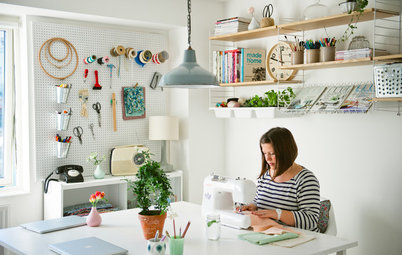
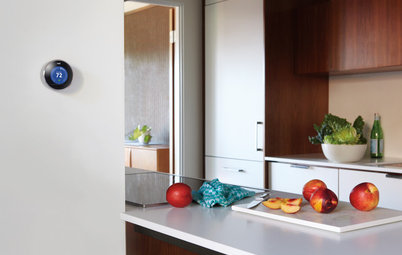
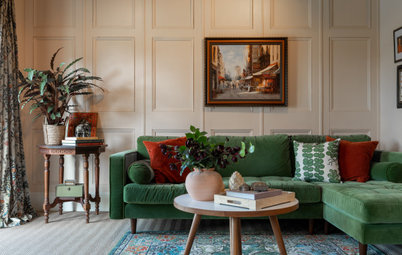

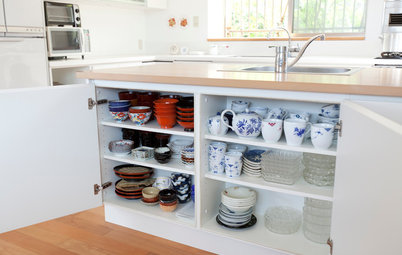
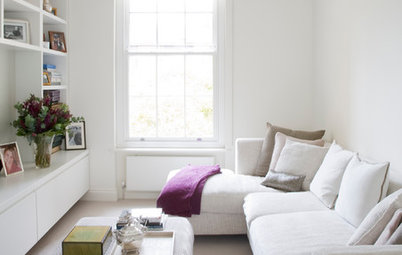
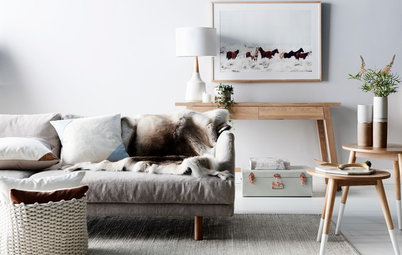
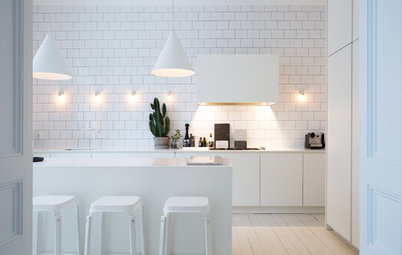
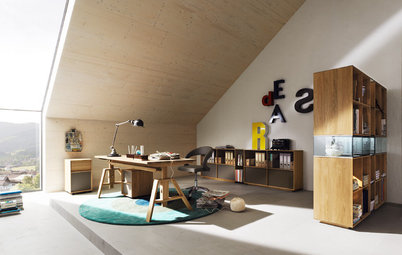
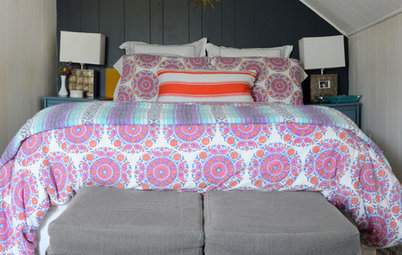
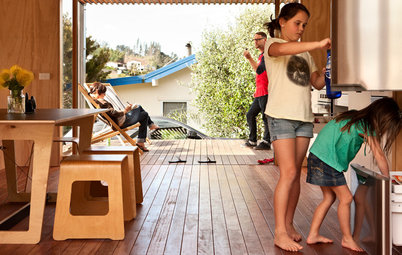

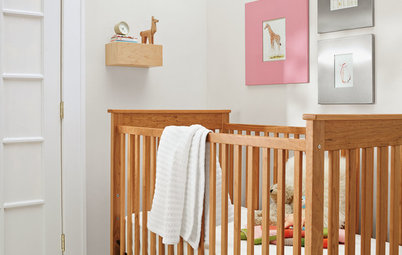
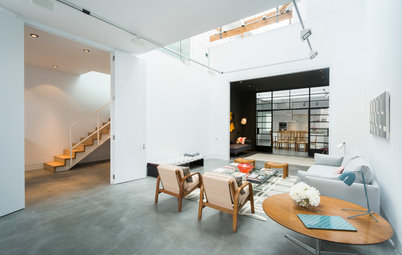
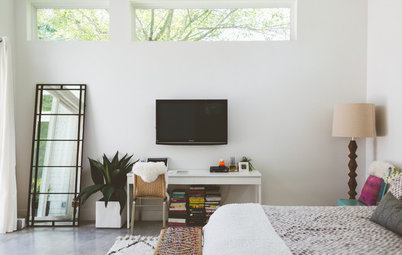

As we grow older, our movement is more unsteady, so a single-storey home is ideally suited to the elderly. There are no pesky steps to climb as all the rooms are on one level.
Future-proof plan If you already have more than one level, consider updating all the rooms on the downstairs level to those you plan to use most often, perhaps even moving your bedroom to the ground floor. If you think you will still have to access rooms upstairs, install a handrail that’s easy to grip, and carpet the stairs to make climbing them more comfortable.